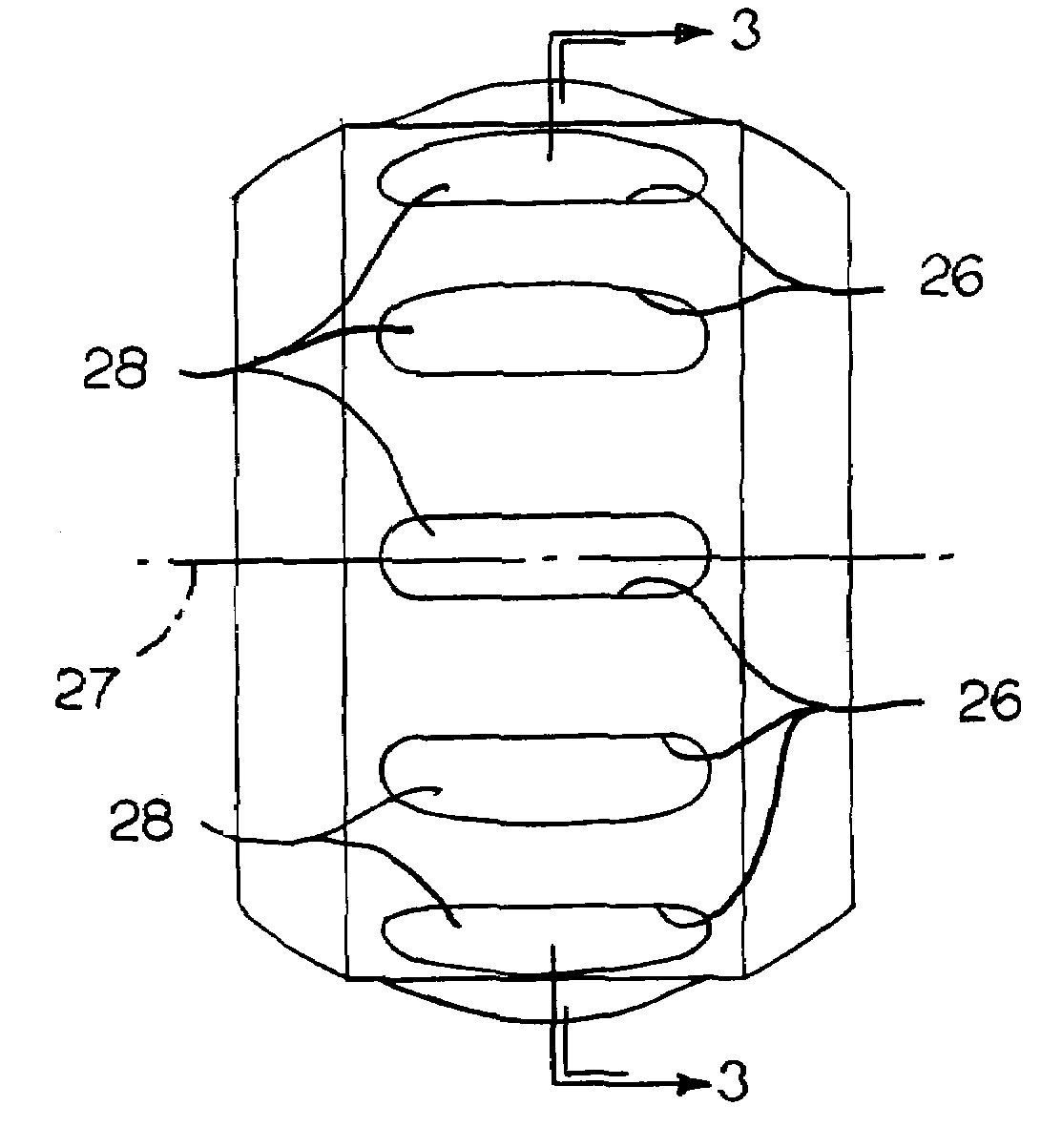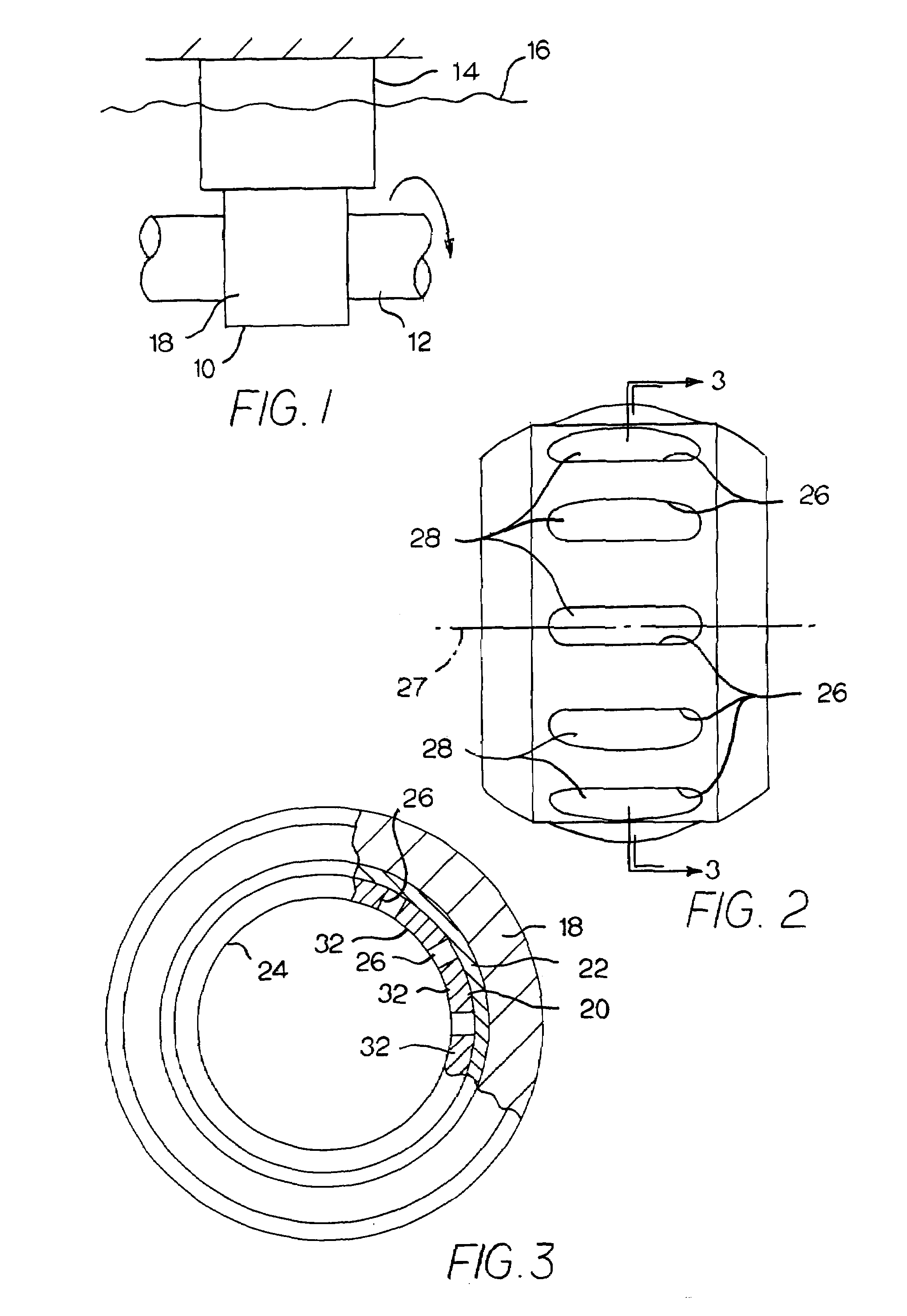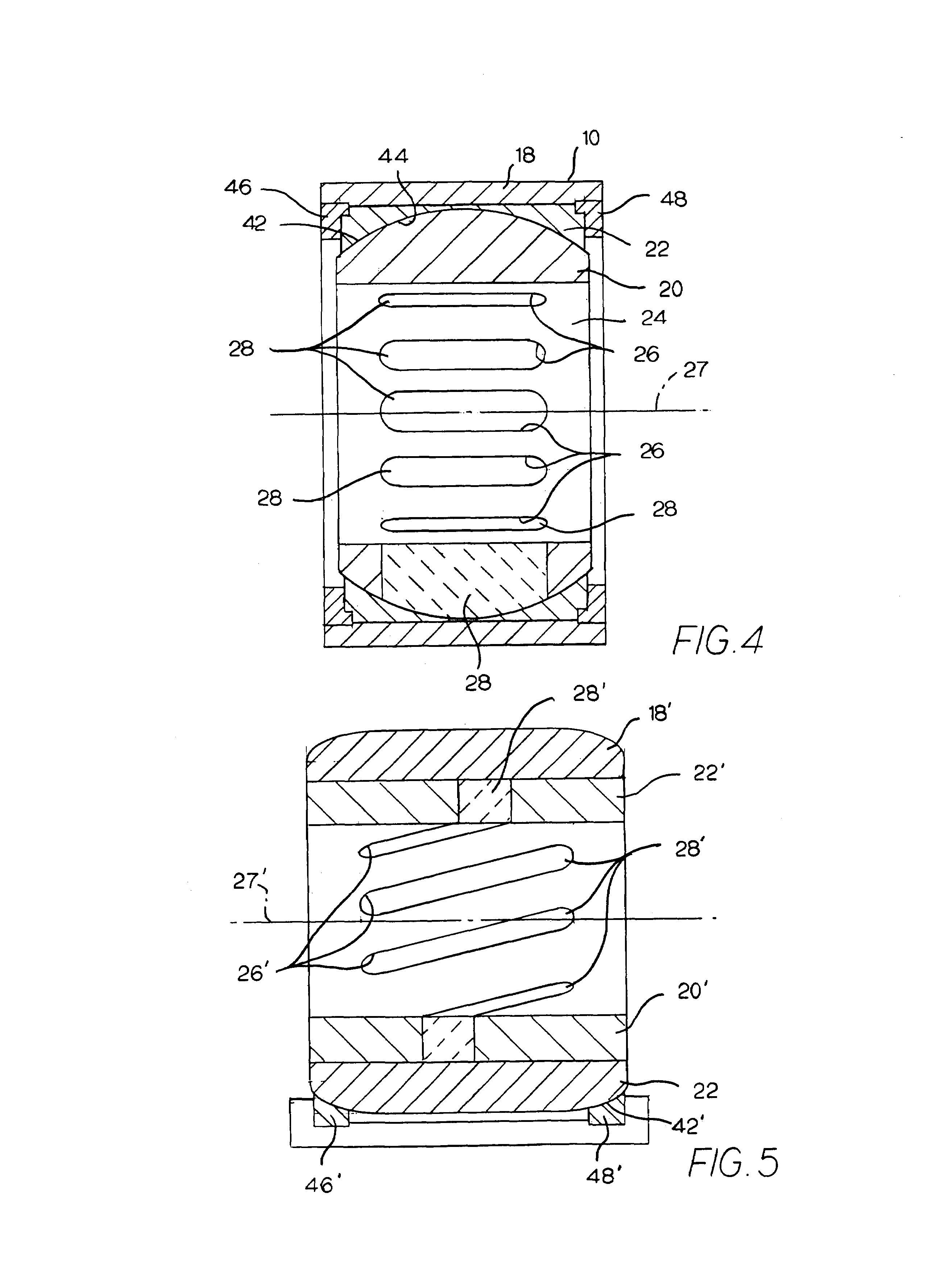Sink roll bearing having ceramic elements for supporting the roll's shaft
- Summary
- Abstract
- Description
- Claims
- Application Information
AI Technical Summary
Benefits of technology
Problems solved by technology
Method used
Image
Examples
Embodiment Construction
[0022]Referring to FIGS. 1 and 4, bearing 10 illustrates a preferred embodiment of the invention for supporting a rotatable shaft 12. Structure 14 supports the bearing and the shaft below level 16 of a bath of molten metal. A bearing housing 18 supports a liner 20, and a holding sleeve 22.
[0023]The sleeve and the liner are cylindrical with the liner having a cylindrical inner liner surface 24.
[0024]Referring to FIGS. 2 and 4, the liner has a plurality of openings or slots 26. Each slot 26 is elongated and parallel to the axis 27 of rotation of a shaft. Other shapes and locations are possible.
[0025]A ceramic bearing element 28 is disposed in each slot 26. Each ceramic bearing element could be straight or have a somewhat tapered configuration with an inner surface 32 curved to form a continuation of the cylindrical liner surface 24, as shown in FIG. 3.
[0026]At room temperature, the width of each slot 26 is slightly smaller (0.0002″ to 0.001″) than the width of its respective ceramic b...
PUM
 Login to View More
Login to View More Abstract
Description
Claims
Application Information
 Login to View More
Login to View More - R&D
- Intellectual Property
- Life Sciences
- Materials
- Tech Scout
- Unparalleled Data Quality
- Higher Quality Content
- 60% Fewer Hallucinations
Browse by: Latest US Patents, China's latest patents, Technical Efficacy Thesaurus, Application Domain, Technology Topic, Popular Technical Reports.
© 2025 PatSnap. All rights reserved.Legal|Privacy policy|Modern Slavery Act Transparency Statement|Sitemap|About US| Contact US: help@patsnap.com



